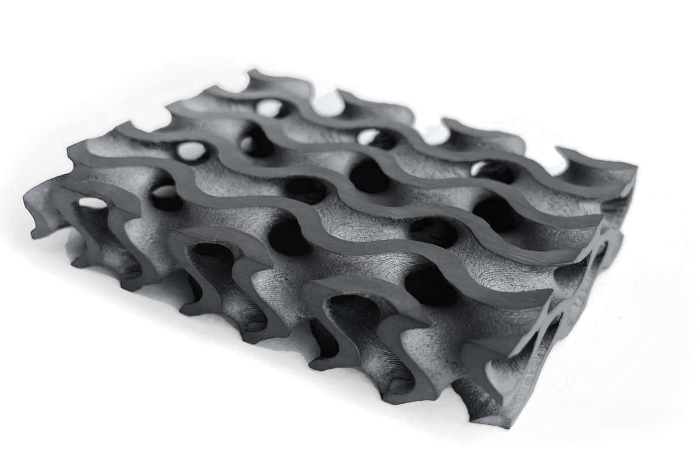Researchers from Pennsylvania State University (PSU), Michigan State University (MSU), Massachusetts Institute of Technology (MIT), and the University of Southern California (USC) have announced a five-year project to improve the production of high-performance ceramics.
Funded by a $4.5 million grant from the U.S. Department of Defense (DoD) through the Office of Naval Research (ONR), this initiative aims to create a more energy-efficient and precise method for manufacturing ceramics critical to hypersonic aerospace and defense applications. The team seeks to develop a process that bypasses traditional bulk heating by using high-intensity lasers, enabling the 3D printing of ceramics capable of withstanding extreme temperatures.
Titled “Photochemical and Photothermal Additive Manufacturing of Preceramic Polymers,” this project is led by Robert Hickey, Associate Professor of Materials Science and Engineering at PSU, and Michael Hickner, Professor at MSU.
Additional contributors include Benjamin Lear, Professor of Chemistry at PSU, alongside Co-Principal Investigators Adri van Duin and Jon-Paul Maria, Priya Vashishta and Aiichiro Nakano from USC, and Alexander Radosevich from MIT. Their research focuses on developing new polymer precursors, using light-based ceramic conversion, and employing computational simulations to enhance material design.
“There’s a major need to try to reduce the energy necessary to convert or make these ceramics and to prevent major geometry changes after printing and processing,” said Hickey. “So, really, we are looking at how to convert polymers into ceramics using light with the ultimate goal of 3D printing high-performance ceramics.”


Enhancing ceramics production with laser-based methods
For this project, the objective is to develop a one-step process that converts polymer precursors into ceramics using light, eliminating the need for bulk heating. Traditional methods require extremely high temperatures, leading to up to 50% material loss and often causing geometric distortions in the final product.
By employing high-intensity lasers, the team intends to trigger chemical reactions that rapidly densify the precursors, resulting in hardened ceramic materials with greater precision. This approach could enable faster and more accurate 3D printing, addressing inefficiencies in heat-based methods.
A critical component of the research is the feedback loop between experiments and simulations. Initial results will inform computational models predicting how new precursors behave under light-based processing. These models will then guide further experimentation, helping to develop materials optimized for high-temperature applications.
This work could have significant implications for defense, particularly in the development of hypersonic vehicles. Ceramics capable of withstanding ultra-high temperatures are essential for these vehicles, and the ability to 3D print complex shapes expands design possibilities. The team also aims to develop computational tools to predict reaction intermediates during ceramic production, refining the overall manufacturing process.
According to van Duin, this project will explore AM techniques for high-temperature ceramics, such as tungsten carbide, and silicon-based ceramics like silicon carbide and silicon nitride. Known for their durability in extreme environments, these materials are crucial for aerospace and defense industries.
This laser-based approach could advance ceramic production by reducing energy consumption and improving the precision of 3D printed components. By eliminating the need for bulk heating, the process tackles a major challenge in ceramic manufacturing, opening new avenues for advanced material design and defense applications.
A dive into other high-performance ceramics for 3D printing
Beyond the PSU-led initiative, other organizations are making strides in improving ceramic technologies for 3D printing.
At Formnext 2023, D3-AM unveiled its novel Micro-Particle Jetting (MPJ) 3D printing technology, designed to enhance additive manufacturing for high-performance ceramics. Overcoming the material limitations of traditional inkjet systems, MPJ enables precise, drop-by-drop construction of complex ceramic components, including alumina and sintered silicon carbide (SSiC).
Stefan Waldner, Chief Product Officer, noted MPJ’s potential to impact manufacturing in sectors such as aerospace and energy. The technology facilitates the printing of water-based suspensions with various particle sizes, expanding material development options.


Elsewhere, Cornell University, Dimensional Energy, and Lithoz were awarded a $50,000 grant to develop novel ceramics for 3D printing parts of clean energy reactors. The project aims to create ceramics capable of withstanding high temperatures in thermocatalytic reactors, improving resilience and CO2 conversion rates.
Using computer modeling and 3D printing, the team plans to optimize reactor part designs. Provided by FuzeHub, this funding supported Dimensional Energy’s efforts to enhance clean energy production and promote supply chain resilience in the U.S.
These projects demonstrate the potential of high-performance ceramics to improve material design and manufacturing processes in sectors such as aerospace, energy, and defense.
Nominations for the 2024 3D Printing Industry Awards are now open. Tell us who is leading.
What 3D printing trends do the industry leaders anticipate this year?
What does the Future of 3D printing hold for the next 10 years?
To stay up to date with the latest 3D printing news, don’t forget to subscribe to the 3D Printing Industry newsletter or follow us on Twitter, or like our page on Facebook.
While you’re here, why not subscribe to our Youtube channel? Featuring discussion, debriefs, video shorts, and webinar replays.
Featured image shows the Pennsylvania State University. Photo via PSU.


